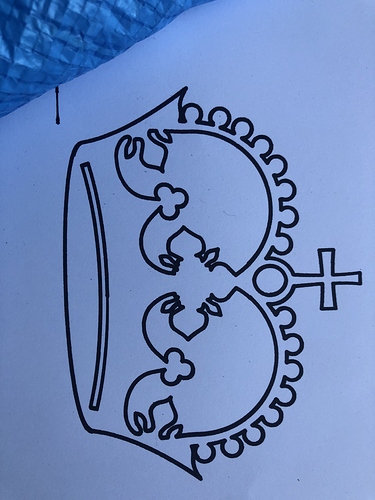True, that.
I hear you.
There is a practical reason I anticipate needing it, and that the LR2 partially enables this scenario, which is awesome.
Like many, my workshop is the garage and with a very rainy 5 months here during the winter, available shop space shrinks from two bays to one, as my wife insists on being able to park in the garage. As well, we have some fairly aggressive noise bylaws in the area that I recently became aware of that can really limit cutting time (and even which days you can).
Since the LR2 can easily be removed and stored, it is feasible to take on an ambitious project that will take many hours to cut. By breaking it down in to individual toolpaths or groups of toolpaths it can be cut in on different days. Or different weekends. But in between I am likely to need to use the space for other things. Being able to reposition the stock accurately within the table and continue an in-progress job is helpful in this kind of situation. I think I found a low-tech solution that should work for me.
If I cut a line of 3/4" dog holes in the spoil board straight across the Y axis at the top of my X-axis travel and position the Y-axis of my stock against the dogs (like these: Adaptive Cutting System Versa Stops | KregTool.com Official Store ), it should always ensure I’m in the right place on Y. Using a triple edge detect it would set everything and I believe that would achieve the ability to continue jobs between removing stock and storing the LR2. The caveat being, as you said, it won’t work if you cut your Y-axis to the point where it isn’t stable to use it to re-align, but that can be planned for.
Bench dogs have the advantage of being affordable, easily removed if not needed for a job, and slide right out after the stock is screwed down.
Similarly, if I put a few X axis spoil board dog holes perpendicular to the zero edge for the Y-axis then it is easy to re-load the stock to the same square location on the table. Especially if I use a lateral clamp from a third side to apply pressure. Kreg make a cheap plastic one of those but it does require more dog holes in the table, thankfully the CNC will make adding them easy.
There would still be the challenge of getting the bit over the same 0,0 position without a sensor though. Does the LR2 calibrate itself to the endstops as an absolute reference we can use?
Would it be feasible to play around and determine as an end user where a comfortable 0,0 would be over that stock corner near the dog holes and note that offset so it can be manually input consistently to continue jobs in the future after the machine was off-line for awhile and maybe needs to be set-up again?
-Jeff

